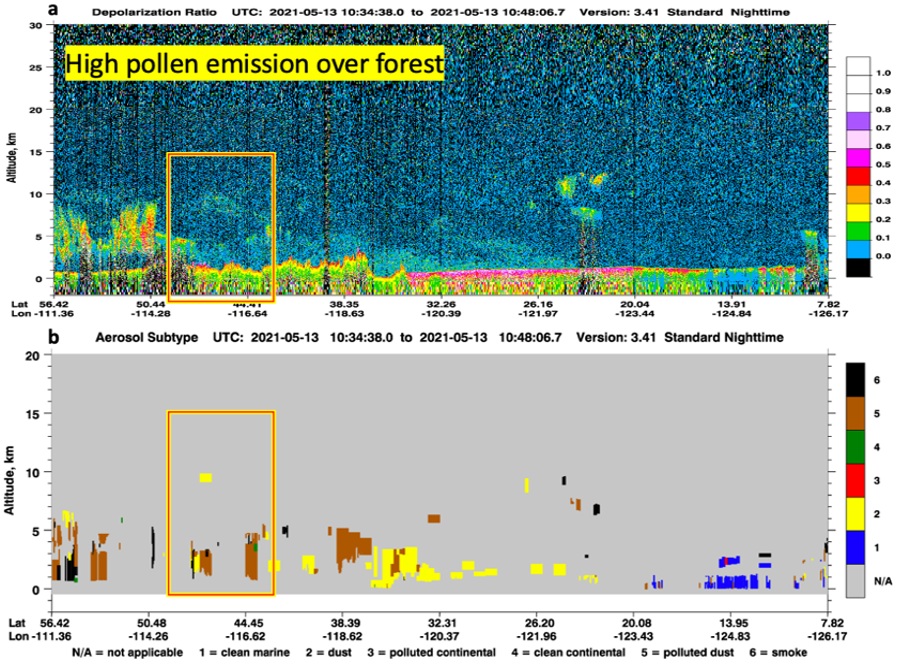
Research on Primary Biological Aerosol Particle Emissions Earns Student NASA Fellowship
Yingxiao Zhang has been selected to receive the Future Investigators in NASA Earth and Space Science and Technology fellowship.

Yingxiao Zhang has been selected to receive the Future Investigators in NASA Earth and Space Science and Technology fellowship.
Yingxiao Zhang, a graduate student at U-M Climate & Space, has been selected to receive the highly competitive Future Investigators in NASA Earth and Space Science and Technology fellowship.
As part of the FINESST fellowship, NASA has awarded $150,000 to fund Zhang’s proposal “Using satellite data to understand primary biological aerosols emissions from forest ecosystems and their impacts on cloud properties.” In the Earth Science Division, 394 proposals were submitted in total and only 62 proposals were selected. Zhang’s faculty advisor is Professor Allison Steiner, Ph.D.

Zhang, who conducted an internship at the Pacific Northwest National Laboratory last summer, also placed in the competition for the Peter B. Wagner Memorial Award for Women in Atmospheric Sciences. She won third place in the Wagner Memorial Award with her paper “Projected climate-driven changes in pollen emission season length and magnitude over the continental United States,” in a tie with another student from Boulder, Colorado.
Primary biological aerosol particles (PBAP) are emitted directly from Earth’s surface, including viruses, bacteria, fungal spores, pollen, leaf litter and other plant debris. Some PBAP like pollen and fungal spores are linked to adverse health effects by triggering disease and seasonal allergies. In addition, they play an important role on regional and global climate. PBAP can scatter or absorb solar radiation and impact Earth’s energy budget. They can also be lifted to the upper atmosphere, take up water and serve as cloud condensation nuclei (CCN) and ice nucleating particles (INP), and impact cloud properties, precipitation, and global hydrological cycles. In addition, pollen and fungal spores are observed to rupture in high humidity and form abundant smaller particles that serve as CCN, and thereby influence cloud formation.
Previous studies indicate PBAP can serve as INP at warmer temperature than other aerosols and play an important role in cloud formation process over PBAP abundant environments, such as forest ecosystems. Despite their health and climatic importance, current observations of PBAP are scarce, and further limit the understanding of the PBAP global distribution and INP abilities. Using remote sensing data to derive PBAP abundance provides a new pathway to understand the PBAP distribution at large spatial and temporal scales. While many previous studies observing PBAP are field based and limited to short periods, remote sensing methods can provide a long-term continuous observation to understand the variations in PBAP and the corresponding effects on cloud properties.
In this study, we propose to combine satellite and ground-based observations with model simulations to address the following questions:
1) What are the seasonal and interannual variability of PBAP in forest ecosystems over North America?
2) How do seasonal variations in PBAP impact the cloud properties and precipitation?
The study will provide insight into understanding surface biological aerosol emissions and aerosol-cloud interactions. It will employ NASA’s integrated observation strategy by combining multiple NASA space and ground observation datasets to detect atmosphere PBAP, understand seasonal and interannual variations, and elucidate the contribution of PBAP to atmosphere composition. They will also analyze the impacts of PBAP on clouds and precipitation using a combination of observations and model simulations, with the potential to improve abilities for weather forecasting.